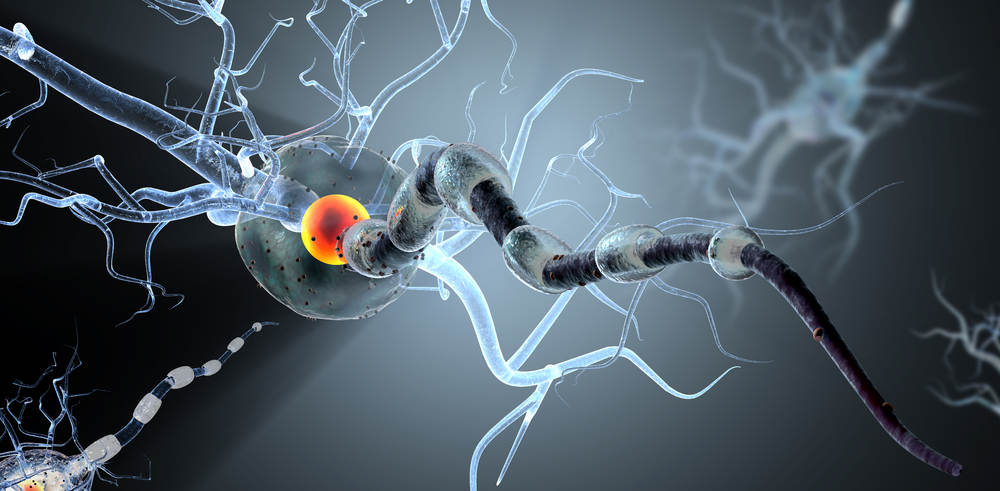New 3-Times-Per-Week Regimen For Teva’s Copaxone Safe, Effective & Increases Patient Compliance #ECTRIMS2015
Written by |

A Satellite Symposia entitled “Discovering a new world in MS” presented by Teva Neuroscience was held yesterday, October 8 at the 31st Congress of the European Committee for Treatment and Research in Multiple Sclerosis (ECTRIMS) currently taking place in Barcelona, Spain, October 7 – 10, 2015.
Dr. Omar Khan from the Wayne State University School of Medicine in Detroit, Michigan presented his work at the symposia under the title “Translating the glatiramer acetate 40 mg three-times-a-week trial data into real-life clinical experience.” Dr. Khan is an expert in multiple sclerosis (MS) and related diseases including neuromyelitis optica (NMO). He is mainly interested in magnetic resonance imaging (MRI) findings in patients with neurological disorders, especially in terms of biomarkers, as well as therapeutics concerning central nervous system injury and repair.
Dr. Khan’s presentation focused on the balance between the risks and the benefits of emerging treatment options for MS, paying special attention to glatiramer acetate (Copaxone, marketed by Teva).
The U.S. Food and Drug Administration (FDA) and the European Medicine Agency (EMA) have approved 20 mg subcutaneous once-daily Copaxone for the treatment of relapsing-remitting multiple sclerosis (RRMS) almost two decades ago, and remains one of the most widely used disease modifying drugs (DMDs) in the treatment of the disease.
Copaxone 20 mg has a good long-term safety profile; however, patients see self-injecting and injection-site reactions as a serious inconvenience of the drug.
“Injection site reaction is the most frequent adverse event” said Dr. Khan in his presentation, referring to Copaxone treatment. This side effect is important as it can result in non-compliance with the treatment.
With the purpose of improving compliance and reducing injection-site reactions, Copaxone was developed in a high-concentration formulation (glatiramer acetate 40 mg) to be administered only three-times-a-week.
RELATED: Multiple Sclerosis News Today To Provide Live, On-Site Coverage Of 31st Annual #ECTRIMS2015 Congress
In a randomized, phase III clinical trial called GALA, researchers found that Copaxone 40 mg three-times-a-week was able to significantly reduce the annualized relapse rate and MRI-disease activity in RRMS patients when compared to a placebo.
As part of this new study, researchers directly compared the efficacy of Copaxone as a 20 or 40 mg regimen. The team found that the incidence of injection-site reactions in RRMS patients under the 40 mg regimen was approximately 20 to 50% less in comparison to patients under a 20 mg regimen or 40 mg once a day. These findings were confirmed in a phase IIIb trial (GLACIER), where a reduction of 60% in moderate to severe injection-site reactions was observed with Copaxone at 40 mg three-times-a-week compared to 20 mg once a day. Furthermore, patients reported that the 40 mg three-times-a-week regimen was more convenient than the daily regimens.
Copaxone 40 mg three-times-a-week has been available in the U.S. for over a year and was recently approved in Europe. It is estimated that in the U.S., more than two-thirds of MS patients currently under Copaxone treatment are in a 40 mg three-times-a-week regimen.
“Glatiramer acetate 40 mg three-times-a-week allows for an increased patient adherence,” concluded Dr. Khan, who believes that this Copaxone treatment regimen “is a safe and effective initial treatment option for RRMS patients. In addition, it offers a tailored approach to RRMS patients preferring a less frequent injection schedule for improved convenience of use and a reduced risk of injection-site reactions.”
Dr. Ana de Barros contributed to this report.





